I extract the final seconds of internet to text farewells and play one last game of Wordle. Our crew never could get a negative Covid test so it’s just the two of us on this first leg of a trans-Atlantic voyage. We navigate through a zillion fishing boats and are lucky to have 2k of Gulf Stream current pushing our engines north on this windless morning as we leave Florida. With a fuel capacity of 700 miles, we’ll need to find some wind to reach Bermuda—1000 miles away. 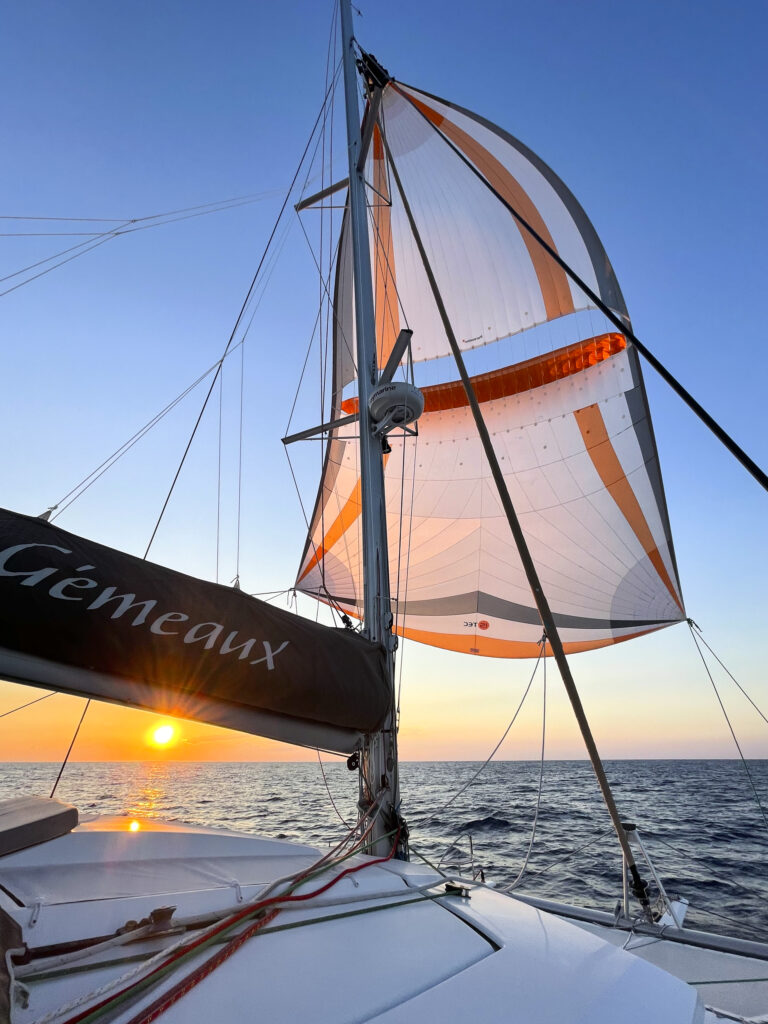 We find a breeze that evening and hoist the parasail—our Goldilocks sail that can fly only when the wind is in a narrow 10-18k range during a downwind sail. My shift begins at midnight with a full moon outshining the stars but casting so much light that I can see the silver shimmer of flying fish fleeing to get out of Gémeaux’s path. I settle into a routine at the helm, keeping one eye on the chart plotter to avoid nearby vessels and one eye on a movie to keep me awake. By 5am, the captain takes over, I go back to bed, and eight days of hot bedding begin.
We find a breeze that evening and hoist the parasail—our Goldilocks sail that can fly only when the wind is in a narrow 10-18k range during a downwind sail. My shift begins at midnight with a full moon outshining the stars but casting so much light that I can see the silver shimmer of flying fish fleeing to get out of Gémeaux’s path. I settle into a routine at the helm, keeping one eye on the chart plotter to avoid nearby vessels and one eye on a movie to keep me awake. By 5am, the captain takes over, I go back to bed, and eight days of hot bedding begin.
We spend Day 2 flying the spinnaker and convincing our bodies of a new sleep and meal routine. Food is a funny thing on a passage. You eat whatever you want whenever you want since mealtime no longer aligns with a traditional night of sleep. Right now, it’s 10am and I’m eating popcorn. We have dinner together since that seems to be the one time of day when we’re both awake. I’ve prepared turkey meatballs, lasagne, and some soup in advance—the rest of the time, we’ll usually grill something from the freezer. We create a routine of mocktail hour in the late afternoon, where any liquid combined with a few precious ice cubes constitutes a special drink and we watch something extraordinary like wind approaching from the horizon:)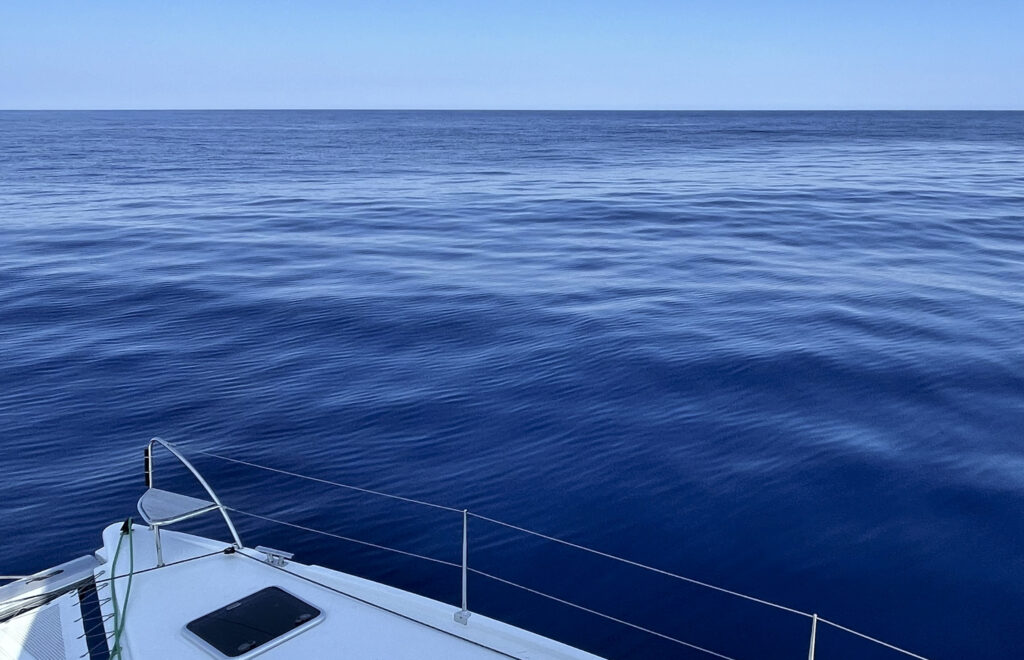
I crawl into bed just after dinner so I’ll be rested when my next shift begins. The temps are warm, none of the food groups have had sufficient time to navigate my digestive tract, and of course the sun hasn’t even set. Somehow, sleep still comes. I never have any problem in this department.
Day 3 of a passage is when they say your body starts adjusting to the routine–take a watch, sleep, eat, rinse, and repeat. There’s absolutely no routine to the wind—it comes up so we hoist a sail, then it dies and we turn on the engines, then it comes up from a different direction so we raise a different sail, then it dies again. When I wake in the morning, I notice the early morning sun is glaring straight into our bow, instead of its usual position off our starboard side. We’ve made our single big right-hand turn of the passage and are now heading east, leaving the Gulf Stream behind. It feels funny going east, a direction we haven’t travelled much in our sailing journey. Container ships pass by every now and then and we still pick up the occasional VHF radio chatter from fishing boats. 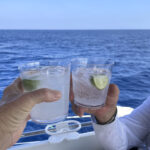 The Coast Guard hails are now coming out of South Carolina, reminding us of the latitude we have now reached. In general, however, the chart plotter is void of traffic as we move farther out into the AtlanticOcean. We’re making fresh water. I always breathe a sigh of relief when the water maker, which requires a lot of hand holding from the captain, does its job. I like a nightly shower and I definitely like drinking water. We’re glad we use a scant 10 gallons/day when it’s just the two of us so the poor machine doesn’t have to work overtime.
The Coast Guard hails are now coming out of South Carolina, reminding us of the latitude we have now reached. In general, however, the chart plotter is void of traffic as we move farther out into the AtlanticOcean. We’re making fresh water. I always breathe a sigh of relief when the water maker, which requires a lot of hand holding from the captain, does its job. I like a nightly shower and I definitely like drinking water. We’re glad we use a scant 10 gallons/day when it’s just the two of us so the poor machine doesn’t have to work overtime.
As I start my midnight watch on Day 4, I discover I missed a rocket launch! The captain lives for these moments and although he never saw the actual Space X launch that evening, he did notice a slow-moving pair of ships, which turned out to be retrieving the Falcon 9 first stage. Very cool. We’re nearly at our half-way point having traveled 600 miles with 400 to go. I start my shift writing with a cup of tea—updating our ship’s log and responding to emails through my satellite email. I move onto a movie and popcorn and by 5am, I can’t keep my eyes open. I find myself hoping for a wind shift or an approaching vessel or something that requires I wake the captain. Eventually he rises, I return to bed, and we declare another day of hot bedding under our belts.
Just as I realize I haven’t taken any sea sickness meds and think gee, passages aren’t so bad, Day 5 hurls me back to reality. Water pounds against the hulls and my flesh rolls back and forth on the mattress preventing any sleep. The captain eventually wakes me before our shift change because the increased winds require we reef the sails. Reefing inherently is treacherous. The reason you’re reefing in the first place is because the wind has picked up, putting too much pressure on the full sails. To reduce the sail, you must first turn the boat into the wind so you’re really pounding into the waves. Now, in the worst conditions, you have to go to the mast—and in our case, also go to the back of the boom (you know, the part that hangs over the solar panels and then drops off to the sea). Of course, it’s night and the moon isn’t up yet so it’s pitch black outside, except when a white spray of water flies over the bow. The wind is now gusting to 30k. There are lines and sheets everywhere because we’ve been using all the sails so everything is twisted and spilling out of the line bag. Plus, I’m still getting used to the new lines we replaced in Florida so even in the daylight it takes me a minute to decide if the new green line is the topping lift or the main sheet. Allen tethers to a safety line because as hard as this reefing project is, I’m pretty sure taking down the whole damn sail and turning around the boat to fetch him out of the water would be harder. The captain returns to safety after successfully getting the reef in and says with a grin, That was exciting! I can think of many other words to describe my racing heart. The next morning, I ask him, Were you afraid? Uncertain if he would even tell me if he were, I still cling to his answer…No. A lot rides on that in my novice sailing brain—if he’s afraid, then you’re damn right I’m scared. As long as he’s not afraid, it’s just part of the adventure and I can rally. For now, I decide I can do another day.
At the beginning of my shift on Day 6, I’m instructed to wake the captain if wind increases to 9-10k and then we’ll put up sails. So, here’s my thought process. First, I always want him to sleep as much as possible so I don’t want to wake him if I don’t have to. Second, each time the wind creeps up to 10k and I think okay, I’m going to wake him, it drops back down to 8k. Don’t wake him. A boat appears on the chart plotter, which is another reason to wake the captain if we get too close, but it’s a sailboat and our CPA (closest point of approach) is 7 miles and not for a few hours. Don’t wake him. Their speed, however, is about 4k so I think they must be sailing in these light winds, which makes me wonder if we should be too? Maybe I should wake him. There IS one more factor I have to admit. Allen mentioned putting up the spinnaker, which I hate doing on the bow in the dark. So, to be completely truthful, I don’t really want the wind to increase. At least not until it’s light again. I know I should be beaten for that. Actually, I don’t think the spinnaker can fly in wind less than 10k so if we’re just on the cusp, I think that sail is out. Don’t wake him. But maybe we would just put up the main sail. I can do that. But I can see the wind is behind us and I don’t think we can maintain our course to Bermuda with that wind direction and the main sail. Don’t wake him. It’s 33 minutes until our shift change and also when day breaks. Wind Is now at 8-9k. I’m letting him sleep.
 I’m at the helm midday on Day 7 and there’s a buzz of activity. First, I’m minding the fishing rod. The captain mumbled something about having put out a rod as he rolled into the hot bed this am and kicked me out to take over the watch. It was a good strategy on his part—quietly notify me of this clandestine operation while I was still in a sleep fog and he was already snoring. I hope this brings joy to all the fishing enthusiasts. We also have company! Not just on the chart plotter but I have a visual on two large cargo ships–one of them is on a collision course with a sailboat. While spying on them through the binoculars, I heard one of the ships hail the sailboat on the VHF. Hearing a voice other than our own after so many days of silence is like hearing a voice from the heavens. Naturally, I listen in and learn that the two boats also have a visual on the other and agree to a maneuver to avert catastrophe. Just then, a bird flies over. Not just any ol’ sea gull, which in this barren landscape is still worthy of excitement, but a Common Tern with its long graceful tail and high-pitched squeaking call that torments the cat. A bird sighting also means land!
I’m at the helm midday on Day 7 and there’s a buzz of activity. First, I’m minding the fishing rod. The captain mumbled something about having put out a rod as he rolled into the hot bed this am and kicked me out to take over the watch. It was a good strategy on his part—quietly notify me of this clandestine operation while I was still in a sleep fog and he was already snoring. I hope this brings joy to all the fishing enthusiasts. We also have company! Not just on the chart plotter but I have a visual on two large cargo ships–one of them is on a collision course with a sailboat. While spying on them through the binoculars, I heard one of the ships hail the sailboat on the VHF. Hearing a voice other than our own after so many days of silence is like hearing a voice from the heavens. Naturally, I listen in and learn that the two boats also have a visual on the other and agree to a maneuver to avert catastrophe. Just then, a bird flies over. Not just any ol’ sea gull, which in this barren landscape is still worthy of excitement, but a Common Tern with its long graceful tail and high-pitched squeaking call that torments the cat. A bird sighting also means land!
As I take my last midnight shift on Day 8, we are 40 miles from port and I can see a faint glow of light from Bermuda. Land is on the chart plotter, champagne is chilling, and any minute I expect to see 400 Facebook messages come soaring onto my phone. So are you ready for this? On this final day of our passage, I could keep going. We’re dialed into a good routine with watches and although I do plenty of whining about all the sail changes, even that process is much easier. Of course, I say all this having had relatively calm seas with no sea sickness. Give me a couple more nights of reefing in 30k winds and I might change my mind. But if we must, I’ll stop in Bermuda to put my feet on land, explore a new country, pick up a new crew member, and finally sleep with my husband on this honeymoon.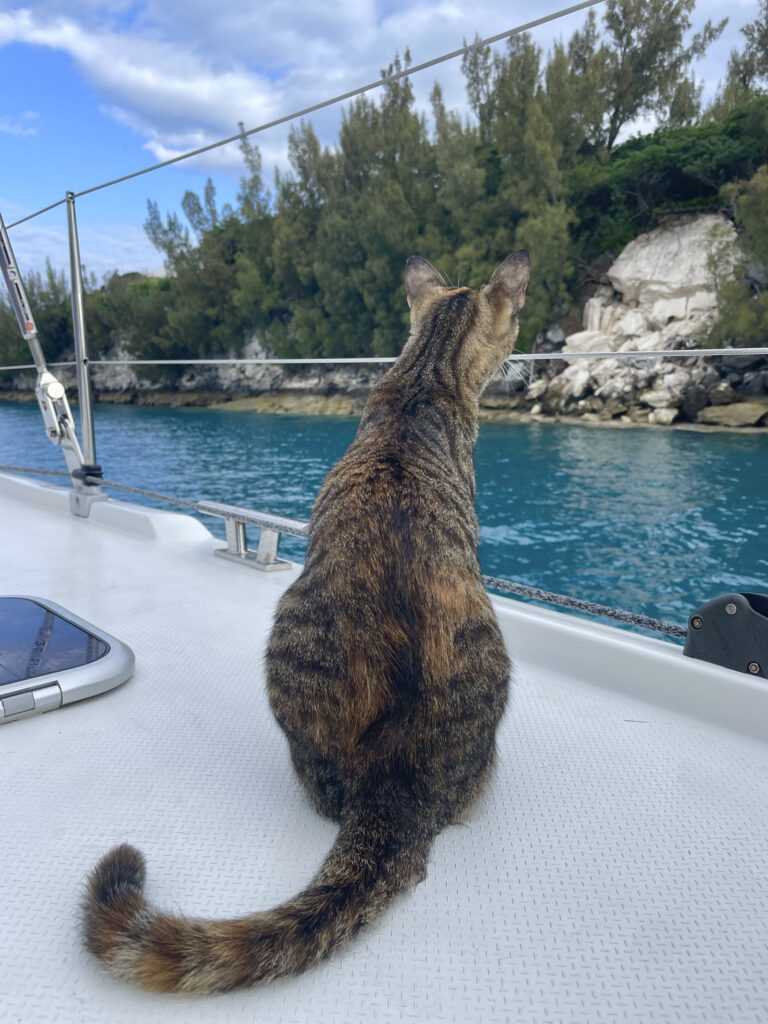

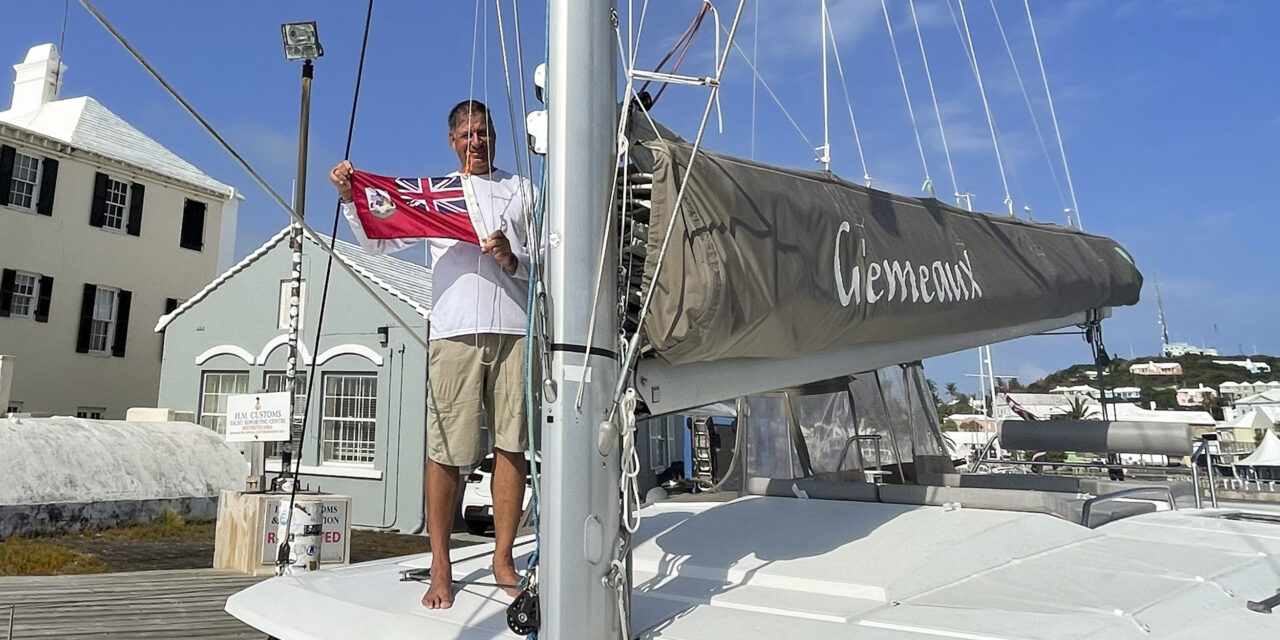
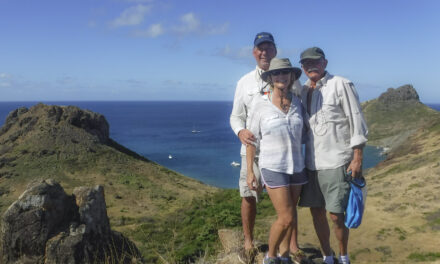
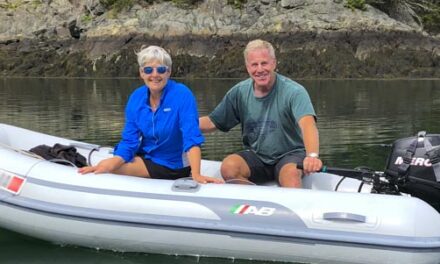



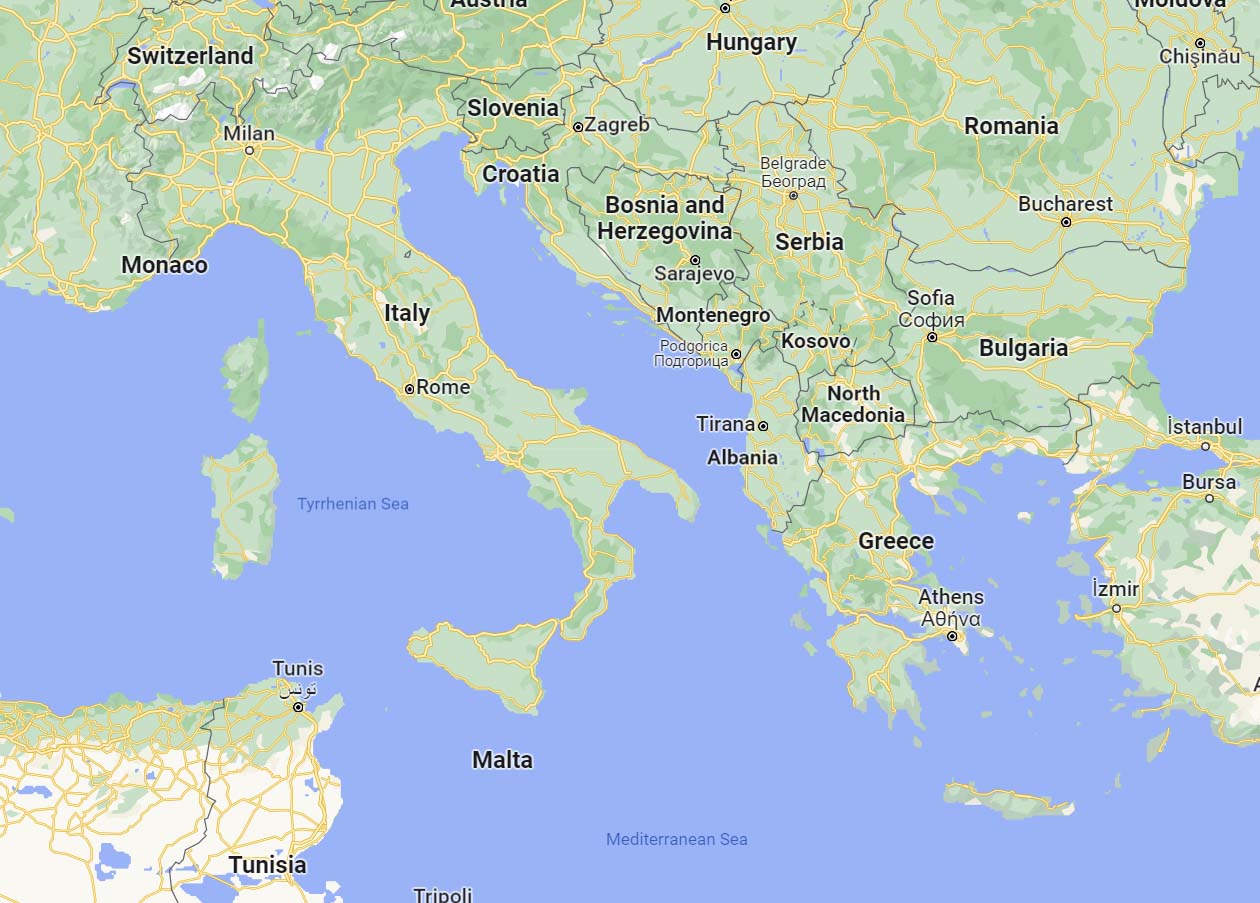
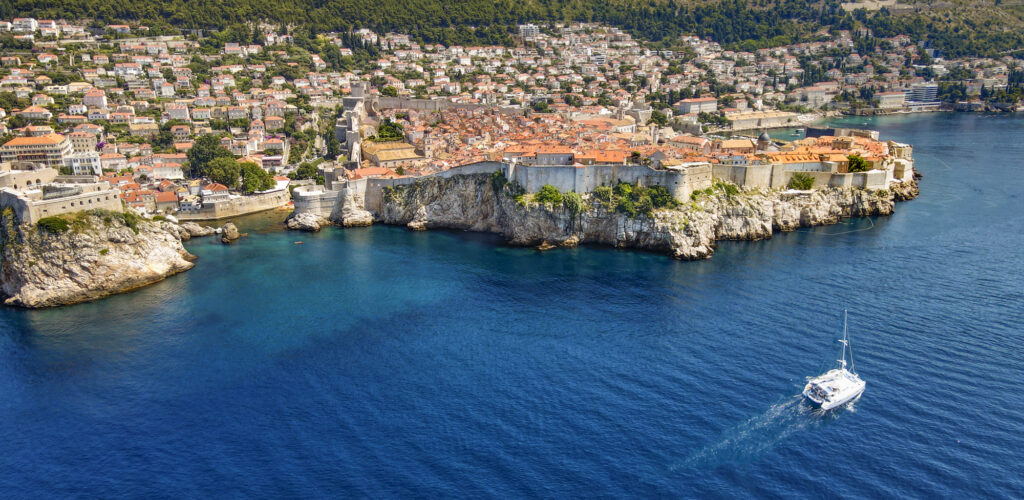
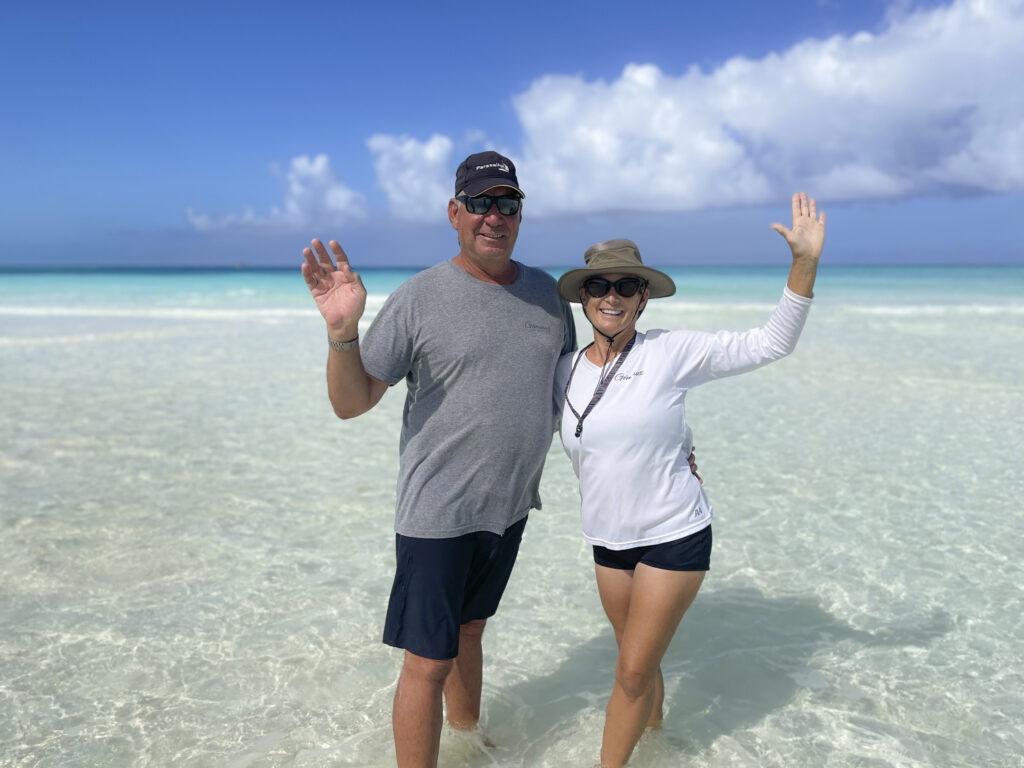
Love learning about your sailing world. I was a little disappointed about this post – based on title I thought it might be a tad racier.
Stay tuned for my romance novels:)
You had me gripping my chair as I read the part about bringing in the sails. Having sailed as a very inexperienced sailor on the Bay, I know how hard something like pulling in the sails when the wind is up can be. Brava!
Thanks for taking us along😊
Where do you store all that popcorn?
Geez, now I have to worry about you crossing the Atlantic to reach the Azores. BE SAFE! We will miss you in Quebec in July — but promise to have a glass of champagne on July 4/6 for the big event. Love!!